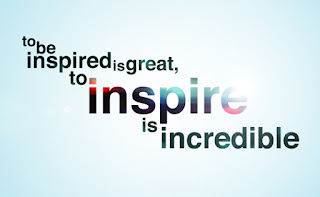I was watching my newly-teen age daughter do her homework yesterday, and I noticed her posture. She was leaning to one side, her one leg folded under her and her head resting in her free hand. A little while later she told me she had a headache. Instead of giving her an aspirin, I asked her to sit down in front of me, and I placed my hands on her shoulders. Just as I thought: her neck and upper back muscles were completely constricted and hard as a rock.
 |
| 3 Minute Neck Massage |
I placed one of my home made hot packs around her neck and then I spent about 10 minutes kneading out the knots with my hands. She started to relax and told me about her day, which was a particularly stressful one for her.
At the end of the 10 minutes I asked her how she felt and she said she was much better. She didn't have a headache any more. When she went back to her work, her posture was much better.
My daughter had not even realized that she was stressed, and her outward posture and headache were her own body's signs of a stress response. The most useful skill I have learned through yoga practice over the years is
how to recognize the signs of stress not only in my own body,
but also the
outward signs of stress in others
. I've spent many years teaching myself, my own kids and my students how to recognize it and head it off before it gets out of control.
Stress related illnesses count for at least $300 billion each year in health care costs & missed work/school. About half of Americans (48%) report lying awake at night due to stress.
(Source: American Psychological Association study, 2009). To combat this, Americans fill more than 50 million prescriptions for sleeping pills and spend more than $600 million on over-the-counter sleep-inducing supplements.
Stress in children is now on the rise with and estimated
45% of school age children reporting feeling worried & stressed and 61% of teens reporting feeling stressed. All of these children reported physical symptoms such as stomach or headaches and nightmares.
In spite of this statistic, only 17%-28% of the parents polled acknowledged that their children's behavior or symptoms could be stress related. These numbers show the
huge disconnect between our own views of stress and how we view the effects of stress on our kids.
It’s difficult for both adults and children to concentrate on work and be/do their personal best when their mind is racing and body is aching. Physically, the upper back, spine, back of head, shoulders and neck seem to be the areas where the most stress and tension builds up, so those are the areas of the body that need the most relief. When we are more relaxed, we have a more positive outlook, concentrate for longer duration, accomplish more in a shorter time frame and stay well longer.
I believe that self-care - particularly managing stress - is the most vital and self-empowering Life Skill that we can teach our students and children.
Exercise,
hydration and monitoring the types and amounts of foods that are eaten are 3 quick ways to minimize and manage stress. Another option is a simple 3 minute massage.
While getting a professional massage can do wonders for reducing stress levels and clearing one's head, it may not be logistically or economically practical on a regular basis. No worries. You can learn to do this yourself, for both you and your child or teen.
Here is the simple process that I showed my daughter. You can learn it for yourself and teach your children how to do it for themselves too.
3 Minute Neck and Shoulder Massage (Video)
 |
| Photo: Barbara Gini for Serenity Health & Fitness |
In my teen yoga classes, one of the techniques I teach in addition to the self-massage technique for shoulders, hands & feet, is the
'Massage Train', pictured at right.
(The picture quality is low because it originally came out very dark, so I had to lighten it a few times to show detail.) This is done at the end of class, in dimmer light, and there is no talking during the activity.
Students who do not want to participate may "opt out" and just do a simple relaxation on their mat, but I have only ever had one student-including the extremely shy & the sensory-avoiding students-opt out.
I encourage each student to focus only on the student in front of them and to massage with intention, to project love, healing, friendship compassion, forgiveness, reciprocation (I usually pick one theme per class rather than all at once.) and all the positive things they wish for themselves, to the person they are massaging.
I sit behind the last student in the line and massage scalp, neck, shoulders, back and arms. I let them do this for about 3-5 minutes. Then, everyone turns themselves around, facing the opposite direction, and we do it for another 5 minutes, with me switching position as well, again, behind the last student in the line.
This is by far the
most asked for activity in my teen classes. Teens are stressed. They are frustrated. They crave calm, relaxation, human contact and a safe, welcoming space that allows them to just 'be'. This activity helps re-connect them with their sense of self, cultivate calm, and gives them permission to 're-charge' their internal batteries. It is an activity that can be done at home at bedtime, after school or anytime your child is stressed.
How do you help your teens manage stress? Please tell us in the comments below.
~Barbara
Contact:
barbara@bodylogique.com
.













